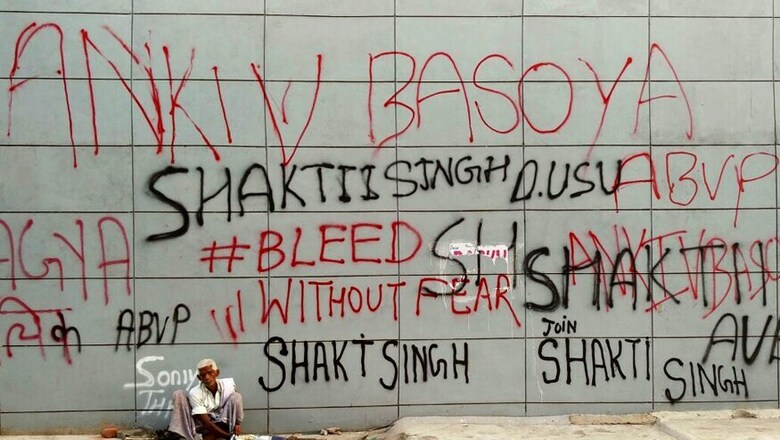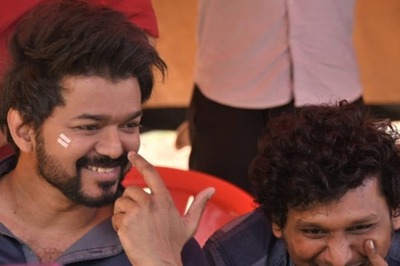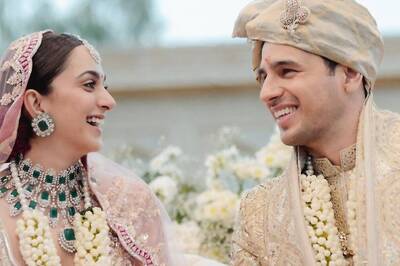
views
New Delhi: Its proximity to the power centre in the national capital makes Delhi University (DU) a favourite talent hunting ground for all national parties.
DU student union elections, thus, are fought with all the rigour and seriousness of the senior league. Around 1.3 lakh regular students, nearly a 1.15 of which are undergraduates coming from different parts of the country are a microcosm of India's diversity. And perhaps also a barometer of the public mood and sentiments.
This year also, as in the past, DUSU elections were a direct contest between the National Students' Union of India (NSUI), the student wing of the Congress party and RSS-affiliated Akhil Bharatiya Vidyarthi Parishad (ABVP).
Of the four posts that the polls were conducted for, the NSUI managed to bag the President and Vice-president posts — a feat it had last managed in 2012. The ABVP was relegated to Secretary and Joint Secretary posts. It had won all four seats in 2015 and three seats in 2016.
For both the Congress and its student wing, which has been battered and bruised in the last three years, the DU results came as a shot in the arm. But what really led to this turnaround at the hustings in the last couple of months? We tried to analyse.
CASTE AWAY, NOT REALLY
“Kabhi Gujjar Jeetein, Kabhi Jat” (Sometimes the Gujjars win, sometimes the Jats)
Caste is a reality in Indian polity. It adumbrates — as the DUSU results show — student union politics. The overtones in the election campaign may be the development of student facilities, campus violence, and ideological differences. But caste, it seems, is a much stronger binding factor even in the predominantly cosmopolitan crowd born much after Mandal politics redrew political faultlines in India in 1990.
“It wasn’t really a vote for the NSUI. No one actually does that. They vote based on their caste as a lot of the students come from UP or Haryana," says Kawalpreet Kaur, president of the AISA’s DU wing.
For five years, ABVP’s candidate for the post of the president has been a Gujjar. So to counter that, the NSUI played the Jat card. NSUI’s president candidate Rocky Tuseed played the victim after his nomination was cancelled, successfully mobilising Jat lobbies around the NSUI. The student union approached the court, which stayed his disqualification. The matter is sub-judice.
“You have to understand. These are students who’ve just stepped out of Class 12. They are embroiled in the patriarchal, conservative norms of society and during the elections (which take place two months after the freshers start their classes). They vote for what they’ve been hearing in their society i.e. caste,” says SFI leader Prashant Mukherjee.
The NSUI dismisses allegations. "My name is Fairoz Khan. Do you think I could have been sitting here if it was only caste-based politics?” counters the NSUI national president.
SHOW ME THE MONEY
“Seat toh usi ko milti hai jiski SUV doosre se badi ho” (The man with the bigger car has more chances of winning the seat.)
While every union acknowledges the role of money to win DUSU elections, they are quick to pass the blame on others.
“Look at what the Chhatra Yuva Sangharsh Samiti (CYSS) did in 2015. Their display of money power, rather than raising issues, is what backfired on them. The students of Delhi University saw through it and the ABVP got all four seats that year,” says Saket Bahuguna, national media convenor of the ABVP.
The CYSS, the students’ union of the Aam Aadmi Party, had contested the DUSU polls in 2015, hoping to ride the wave that helped the party come to power in the national capital.
The Lyngdoh committee in its report had recommended that the maximum permissible expenditure per candidate be set at Rs 5,000 and student unions were quick to shun, denounce it over “the immense size, student base of the university”.
So, where is the money being spent on and why do they need to do so? “Pizza parties, distribution of chocolates, extravagant excursions and even handing out pepper sprays,” says AISA’s Kanwalpreet Kaur.
THE NOTA FACTOR
Notably, for an academic institution with such strong underlying political current, only 42.8% of the students turned up to vote and more than 9,000 of them voted for None Of The Above (NOTA).
The steady decline in the number of voters and the students’ show of dissent by voting for NOTA brings into question the on-ground realities of Delhi University politics.
“I really think there should be a study on NOTA voters to understand which college, strata and caste they are from and why they do not want to vote for any of us,” says Kanwalpreet Kaur.
In an election where less than 90,000 individuals vote, over 9,000 going to NOTA is a very serious issue. Does it not mean the complete rejection of Delhi University politics?
“I think a lot of the NOTA voters were actually ABVP supporters who, because of peer pressure and such factors, decided to take the ‘no one’ route rather than casting a ballot for NSUI or Left,” says ABVP’s Saket Bahuguna.
“If these people do not believe in the current crop of candidates, then let them enter politics and work for the students,” says SFI’s Prashant Mukherjee, a view also espoused by NSUI’s Fairoz Khan.
As Plato once said — One of the penalties for refusing to participate in politics is that you end up being governed by your inferiors.




















Comments
0 comment